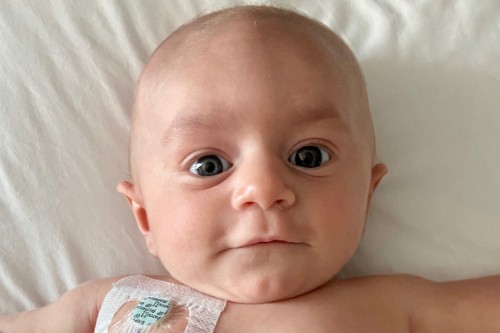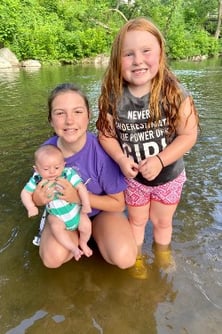
Parker's Story

After an uneventful pregnancy and birth, Tiffany Green was looking forward to bringing son, Parker James Cameron, home to bond with her and his sisters. But a week after Parker’s birth, Green learned something unsettling. Parker had no immune system in the middle of the COVID-19 pandemic.
“I was shocked,” Green told NBC’s TODAY. “It was a completely normal pregnancy. It wasn’t until it was picked up on the heel prick that we found out about his severe combined immunodeficiency (SCID).”
What is SCID?
SCID is a group of rare disorders caused by mutations in different genes involved in the development and function of infection-fighting immune cells, also known as T-cells. It occurs in about 1 in 60,000 births. Infants with SCID appear healthy at birth but are highly susceptible to severe infections.
“Kids are prone to infections and more than 90 percent of them are going to die in their first year of life due to an overwhelming infection unless we do something about it,” said Blachy Dávila, MD, a former blood and bone marrow transplant specialist in the Division of Blood and Marrow Transplantation at Children’s National Hospital, who treated Parker.
A bone marrow transplant, gene therapy or enzyme therapy are all treatment options that can give children diagnosed with SCID a chance to live a long, healthy life.

More than 80 percent of SCID infants do not have a family history of the condition. Since 2010, doctors have been screening children for SCIDs and that has allowed them to extend their lives. It is genetic, but in about 15 percent of cases doctors do not understand what gene causes the SCID.
“The only way to really prevent infection is to give the kid an immune system,” Dr. Dávila said. “The only way we can do that is actually replacing their blood with someone else’s blood that has white blood cells that work normally. That’s where the transplant comes in.”
A successful bone marrow transplant
For Green, hearing that her infant son needed to undergo chemotherapy and a bone marrow transplant just months after his birth was overwhelming.
“It was really scary,” she said. “The biggest thing for me was having this new baby and looking at him and not really knowing if our time was going to be cut short.”
But he didn’t have any infections and he was cleared for the procedure as soon as they found a bone marrow match. Green’s daughters, Natalie and Avery, should have been “the best possible” matches but they were not and Parker needed an unrelated donor.
Before Parker was 3 months old, he returned to Children's National for chemotherapy, to kill his remaining T-cells, and the bone marrow transplant, to give him a new immune system.
Parker's Care Team Departments


Be the Reason a Child Smiles
Every day at Children’s National Hospital, lives are changed through compassionate care and groundbreaking discoveries. Your charitable donation helps us deliver expert treatment and hope to thousands of children and families.
Meet the patients whose stories inspire us—and see the difference your support makes.






